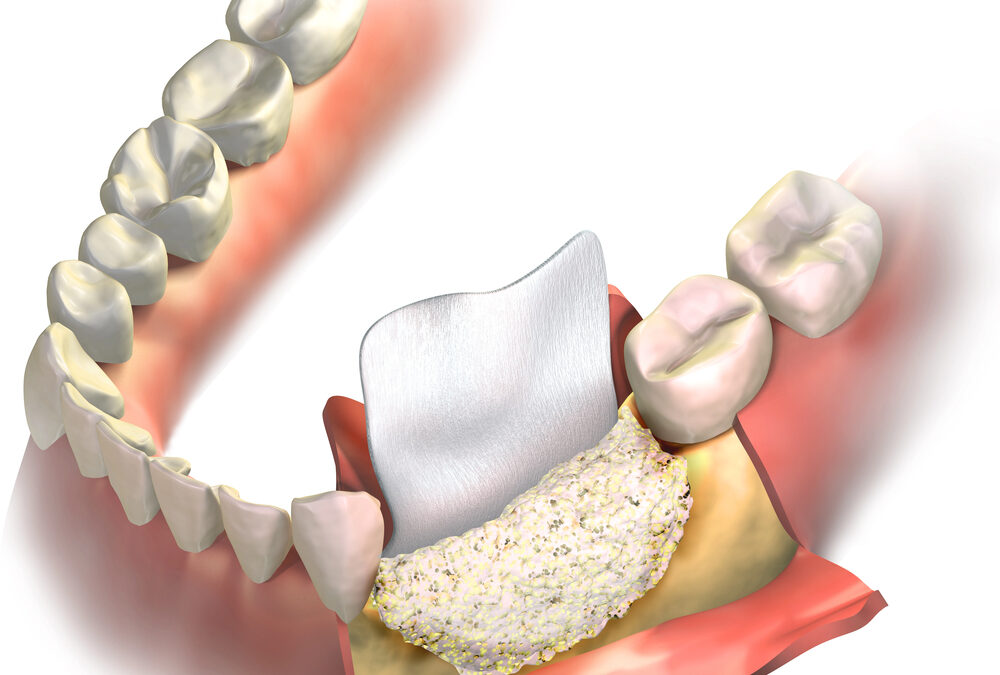Modern dentistry is evolving rapidly, offering solutions that were once unimaginable. Among these advancements, bone augmentation stands out as a transformative procedure, particularly for those seeking dental implants or dealing with significant jawbone loss. Often overlooked in favor of more commonly discussed treatments, bone augmentation is an unheralded dental treatment worthy of marketing. This innovative procedure not only addresses functional needs but also delivers profound improvements in patients’ quality of life.
Understanding Bone Augmentation
Bone augmentation refers to a set of procedures aimed at restoring or increasing the volume and density of the jawbone. The jawbone plays a critical role in supporting teeth, maintaining facial structure, and facilitating oral function. However, factors such as tooth loss, trauma, periodontal disease, or age-related bone resorption can lead to significant jawbone deterioration. Without adequate bone structure, patients may find themselves ineligible for dental implants or experiencing challenges with oral health.
Bone augmentation procedures typically involve grafting bone material—either from the patient’s own body, a donor source, or synthetic alternatives—to areas of the jaw that require reinforcement. Over time, the graft integrates with the existing bone, creating a stronger and more stable foundation. This process is particularly vital for patients considering dental implants, as these artificial tooth roots need sufficient bone density to remain securely anchored.
Benefits of Bone Augmentation Are Numerous
One of the most compelling aspects of bone augmentation is its versatility. This procedure can address a wide range of dental and medical challenges, making it a cornerstone of modern oral healthcare. The benefits of bone augmentation are numerous, encompassing both functional and aesthetic improvements:
1. Enabling Dental Implants: Dental implants have revolutionized restorative dentistry, but they require a healthy jawbone for stability. Bone augmentation ensures that patients who might otherwise be ineligible for implants can still benefit from this long-term tooth replacement solution.
2. Improved Oral Function: A strengthened jawbone enhances chewing efficiency and speech clarity. Patients who have suffered from bone loss often notice significant functional improvements after undergoing bone augmentation.
3. Preserving Facial Structure: Jawbone deterioration can lead to changes in facial appearance, such as sunken cheeks or a prematurely aged look. By restoring bone volume, bone augmentation helps maintain facial aesthetics and prevents the collapse of facial structures.
4. Preventing Further Bone Loss: Bone grafting stimulates natural bone regeneration, halting the cycle of bone resorption that often follows tooth loss or other oral health issues.
5. Boosting Confidence: Restoring the jawbone’s strength and structure can dramatically improve a patient’s self-esteem. Whether it’s the ability to smile without hesitation or eat without discomfort, the psychological benefits are undeniable.
Types of Bone Augmentation Procedures
Bone augmentation encompasses several techniques, each tailored to the specific needs of the patient:
1. Bone Grafting: This is the most common approach, involving the placement of bone material in areas of deficiency. The graft can be sourced from the patient (autograft), a donor (allograft), an animal source (xenograft), or manufactured materials (alloplast).
2. Sinus Lift: For patients with insufficient bone in the upper jaw, particularly near the molars, a sinus lift raises the sinus membrane and adds bone material to the area.
3. Ridge Expansion: When the jawbone is too narrow to support implants, ridge expansion widens the bone by splitting and grafting it.
4. Distraction Osteogenesis: This advanced technique gradually lengthens the bone by encouraging natural growth through the use of specialized devices.
Why Bone Augmentation Deserves Greater Attention
Despite its transformative potential, bone augmentation remains underappreciated in public discourse. Many patients are unaware of its availability or its significance in facilitating other dental treatments. This lack of awareness underscores the importance of marketing bone augmentation as an unheralded dental treatment worthy of marketing. Highlighting its role in enabling dental implants, preserving facial aesthetics, and improving oral health can help elevate its profile in the dental community and beyond.
Marketing efforts can focus on educating patients about the causes and consequences of jawbone loss, as well as the benefits of early intervention. By emphasizing patient success stories and leveraging visuals that showcase before-and-after transformations, dental practices can demystify the procedure and encourage more individuals to explore their options.
Patient Considerations and Expectations
While the benefits of bone augmentation are numerous, it’s essential to set realistic expectations for patients. The procedure often involves multiple stages, including healing periods that allow the graft to integrate with the existing bone. Depending on the complexity of the case, full recovery can take several months.
Patients should also understand the importance of maintaining good oral hygiene and adhering to follow-up care. A collaborative approach between the patient and the dental team is crucial to achieving optimal outcomes. Additionally, advancements in technology, such as 3D imaging and guided surgery, have made bone augmentation safer, more predictable, and less invasive than ever before.
The Future of Bone Augmentation
As dental technology continues to advance, the field of bone augmentation is poised for even greater innovation. Researchers are exploring new biomaterials, growth factors, and stem cell therapies that could enhance the effectiveness and efficiency of these procedures. Such breakthroughs have the potential to make bone augmentation more accessible and affordable for a broader range of patients.
Moreover, increased awareness among both dental professionals and patients will further solidify bone augmentation’s status as a cornerstone of modern dentistry. By investing in education, research, and patient-centric care, the dental community can ensure that this life-changing procedure reaches its full potential.
Bone augmentation is a game-changer in the world of dentistry, offering hope and solutions to patients with jawbone deficiencies. From enabling dental implants to preserving facial aesthetics, the benefits of bone augmentation are numerous and profound. As an unheralded dental treatment worthy of marketing, it deserves a prominent place in discussions about oral health and restorative dentistry. By shining a spotlight on this vital procedure, dental professionals can empower more patients to reclaim their oral health and confidence.














